If you are looking to get in more shooting, you can enjoy winter field archery with a few small adaptations.
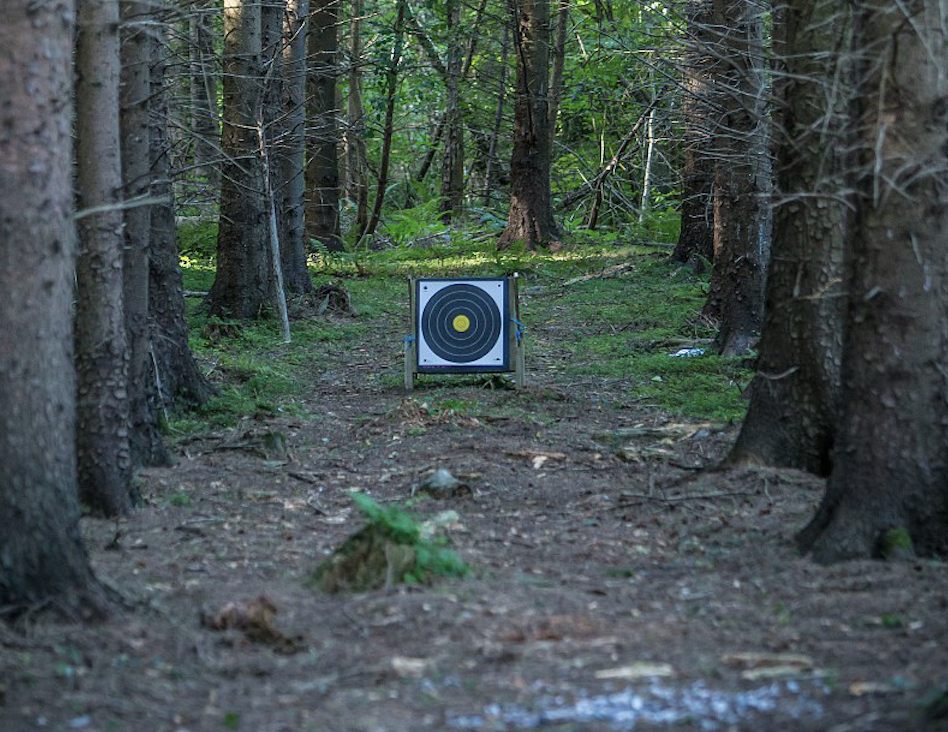
Asking a field archer when the indoor season starts and you are likely to get a funny look. The National Field Archery Society and English Field Archery Association host all shoots in woods and competitions run outdoors all year round and in all weathers.
If you are looking to get in more shooting, you can enjoy winter field archery with a few small adaptations.
Even in a familiar set of woods, shooting in winter gives a new perspective. There may be less daylight but in deciduous areas, parts of the wood which are usually in shadow are now open.
Where undergrowth has died back, there may be new potential placements for shots taking advantage of greater access and clearer lanes. However, care must be taken to avoid areas where the ground is unstable or waterlogged, which includes access tracks and parking areas.
Timing
With shorter days, the first challenge is completing a shoot in the available time. EFAA uses a range of rounds and clubs typically put on ten target International rounds in winter, rather than the 14 target rounds used the rest of the year.
For NFAS shoots, where courses typically consist of 36 to 40 animal target set fresh and taken down each time, more adaptation is needed.
There are several successful winter formats to maximise the shorter time on the range. One is a two arrow shoot – rather than the usual maximum of three arrows at each target, archers have just two opportunities to hit. The first shot can offer a level of challenge, with the second placed to give archers of all abilities a good chance to hit the target.
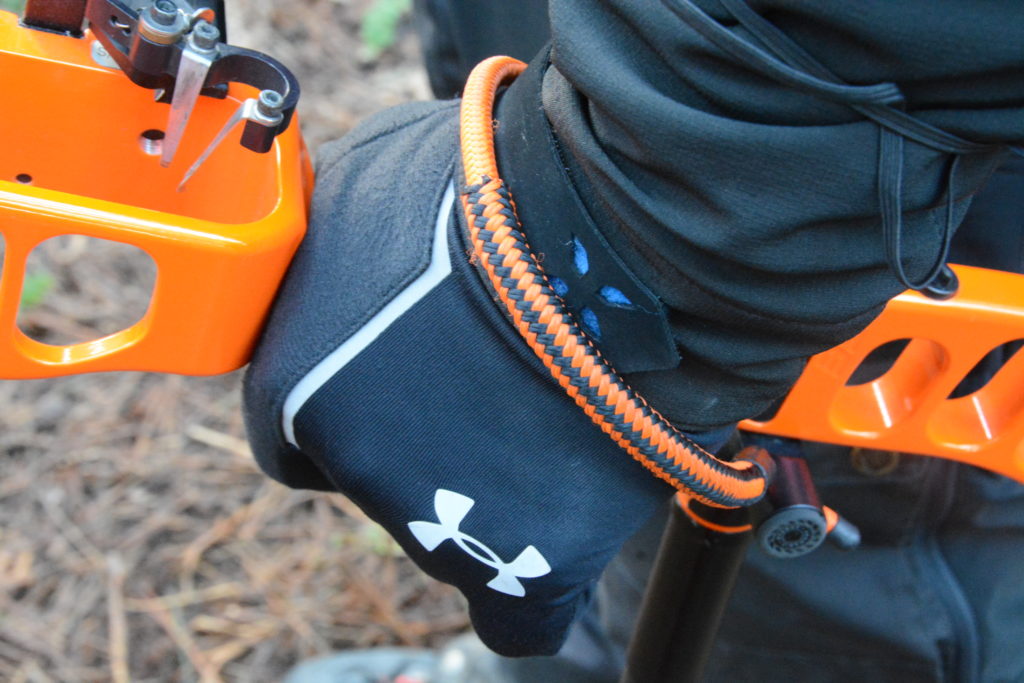
Even tougher is a single arrow shoot – archers only have one arrow at each target, which are placed closer than usual shooting distances but with particular efforts to deceive, such as partial concealment of the target or use of dead ground.
Another option is double-pegged shots – half the usual number of targets but each target has two sets of pegs, laid so that both can be shot simultaneously. The group will split to shoot all targets from one side, swapping to the other for a second circuit.
All of these options reduce the time the archer spends on each target, meaning a shoot can be completed and the course taken down in daylight while still offering visiting archers a full day’s shooting.
Equipment
Winter weather affects certain bow classes more than others. Wooden bows are most sensitive to climatic conditions and it is not advisable to shoot them on very cold days.
The bowyer Pip Bickerstaffe describes the issue in his advice on shooting longbows; “the colder a piece of wood, the stiffer and more brittle it becomes. Avoid using a bow in sub-zero (°C) temperatures.”
When shooting wooden arrows, keeping fletchings dry is an ongoing problem because wet feathers will flatten and no longer be as effective at stabilising the arrow in flight.
A simple step is to keep a plastic bag or cut-off bottle to protect unused arrows in your quiver from rain. Certain archers swear by their own solutions, such as spraying feathers with hairspray and commercial products are available which claim to waterproof feathers.
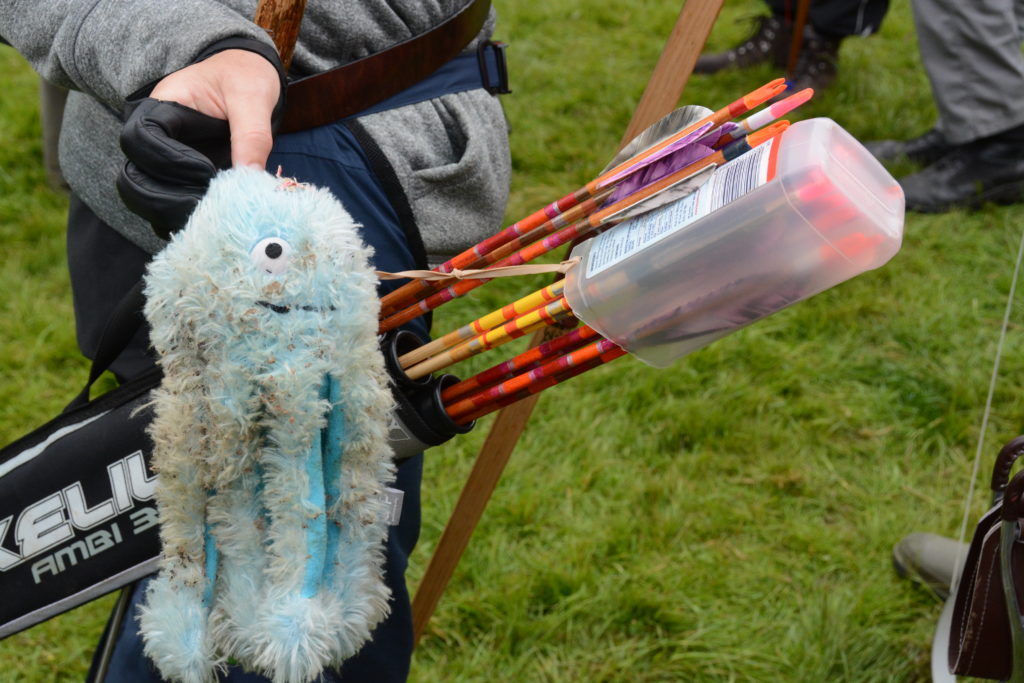
However, all treatments will affect how the arrow flies and are worth testing before a shoot. It is also worth considering that arrows which miss the target may be harder to find in leaf litter, mud or snow and therefore it is worth taking more arrows than you would normally carry and taking a cloth (or soft toy octopus) to clean arrows before returning to your quiver.
For archers shooting bows with metal risers, cold has minimal effect on the shooting performance but may get very cold. A glove can make the bow more comfortable to hold but will make a difference to your shooting as any padding in the glove will change the position of your hand on the grip.
You may also find yourself gripping the bow more tightly which will send your arrows to the right (if right-handed). This problem can also affect wooden bows without shaped hand positions, when rain makes leather grips slippery. Try to pick the thinnest possible gloves and be conscious of retaining an open hand.
Depending on how much you feel the cold, other pieces of equipment can make the day more comfortable. In very cold conditions, loosing with fingers can be painful and a glove is likely to disrupt so a hand-warmer (charcoal or gel) can help to maintain flexibility.
Keeping a hot drink with you can provide instant warmth, so a robust thermos is a good idea. Umbrellas can be helpful where the wood is open enough, though other potential uses, such as to provide a buffer from wind, are only permitted in specific circumstances.
From the NFAS rule book: “It is only permitted to physically assist another archer where there is a genuine safety issue, e.g. high wind, dazzling sun or slippery terrain.
This can only be done with the unanimous agreement of all members of the shooting group and only if there is no risk to the archer, the person providing the assistance and all other members of the group.”
From observation, a big problem with taking an umbrella on a field shoot when it is not a regular part of your kit, is leaving it behind when following the course on to the next target.
In this circumstance, you should never approach a target from the exiting side, as you may place yourself in the shot, so a shoulder strap or other way to keep the umbrella with you when not in use minimises this risk. A further practical challenge of winter archery is keeping scorecards dry in wet conditions.
Waterproof score cards and all-terrain pens are available but are expensive, so a plastic cover for cards and using a pencil for scoring may help to avoid the paper disintegrating and ink running.
Clothing
Being comfortable throughout the shoot is vital to maintaining scores and health. The ideal is to strike the correct balance between keeping warm and being able to maintain full movement and multiple thin layers are generally most effective at maintaining warmth without adding bulk.
The outer top layer is particularly important. Ideally, this should be able to stop wind, rain and be relatively tight fitting. Certain types of fabric like fleece or denim absorb water, getting heavier as they get damp and taking warmth from your skin.
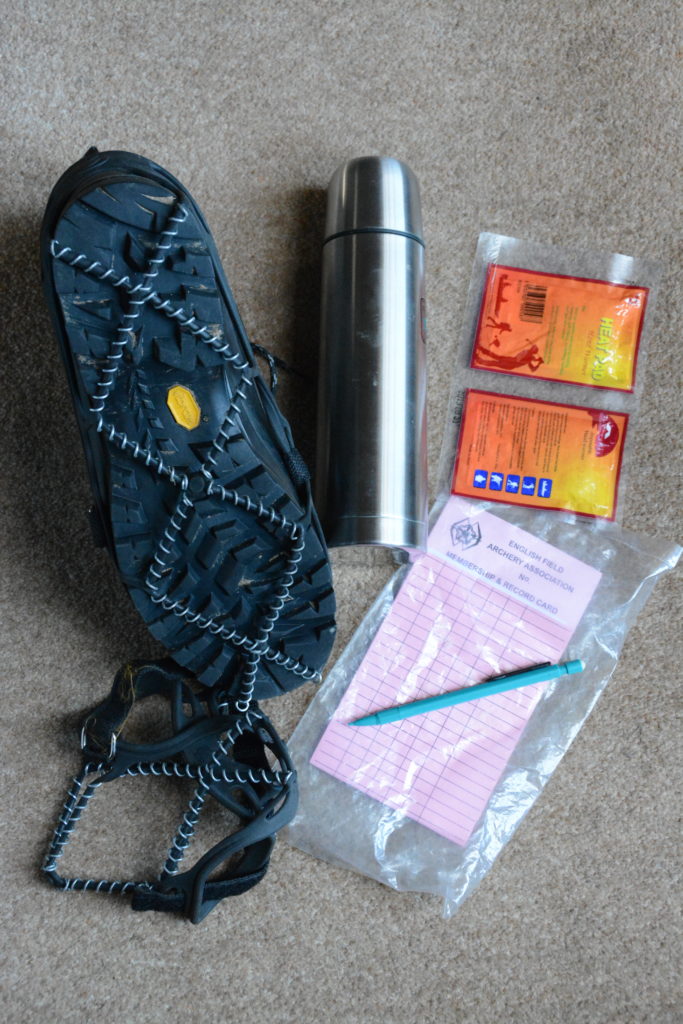
In addition to being uncomfortable, this is likely to affect your posture: if you are hunched with cold and not standing tall, this in turn will affect draw length. The best materials are those which keep out water while allowing moisture to wick out: look for those made of Gore-Tex or equivalents.
While warm, padded jackets are bulky and likely to get in the way, affecting your ability to achieve appropriate back tension. A poncho can be a good emergency waterproof but with anything loose or anything with loose sleeves, there is a risk they may catch the bow string.
A waistcoat or gilet can keep the core warm without impeding your draw. Even if you do not normally use a chest protector, you may find this keeps your extra layers out of the way. To manage sleeves, consider a longer bracer or a restraint, such as a tubigrip stretch bandage.
It is best to test an outfit before the shoot and checking whether you can still do a clean draw and are not risking bracer slap.
A hat is a simple way to retain heat but can also have a dual purpose to keep sun out of your eyes. Although not likely to be strong, the low angle of the sun in the winter months can be dazzling when there is no leaf canopy. From painful personal experience, be very careful using a hat with an elastic chin strap for archery.
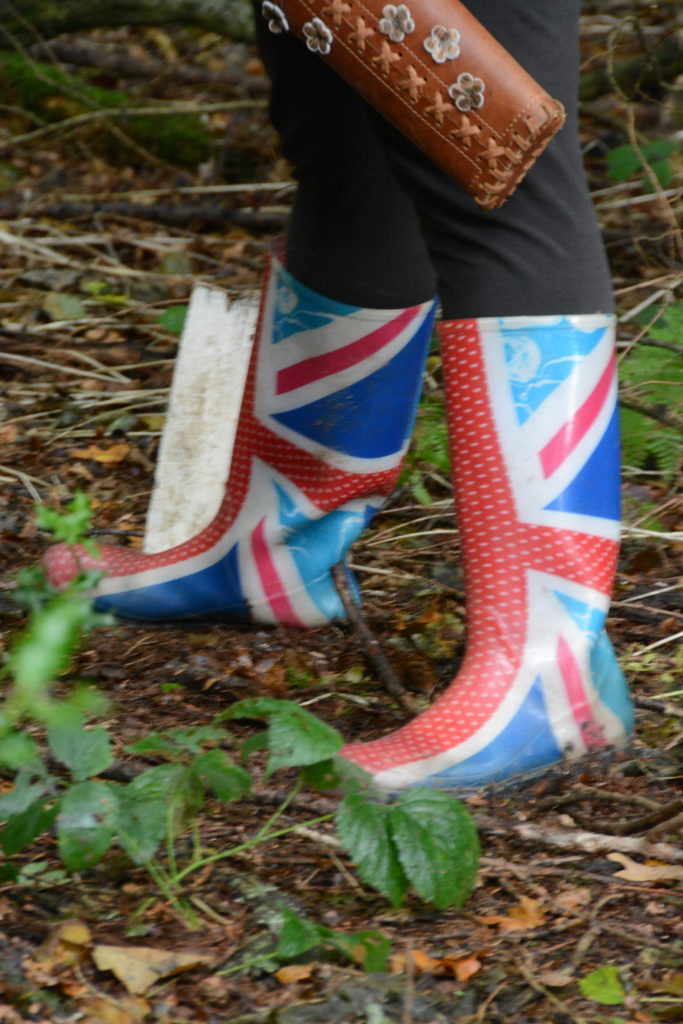
There is a chance that the toggle will get caught in the bowstring, stretch, then come back and whack you. This happened to me, annoyingly just a few days after newspapers were full of a celebrity’s botched plastic surgery which gave her a ‘trout pout’ and I had to spend two weeks explaining to people that my swollen lips were just because I had smacked myself in the face.
The ground is likely to be muddy and slippery so a good pair of waterproof boots is a piece of kit which make a huge difference to your comfort and safety. While traditional wellington boots can work well in wet conditions, in very cold weather, they provide little insulation.
For additional grip, an option are detachable mini crampons which strap onto most boots. Where the ground is likely to be muddy, gaiters are an inexpensive way of stopping cold, muddy water going into your boots. Again, this is something which can make a huge difference between enjoying the day and surviving it.
Packing up
Finally, after the shoot, all equipment should be dried away from direct heat before putting it away. Arrows which missed and were then retrieved should be checked for damage which may be hidden under dirt. Feather fletchings which have become dirty or flattened can be gently reshaped in the steam from a kettle.
If this sounds like too much of a change from a cosy sports hall, consider trying winter field archery just as an experience.
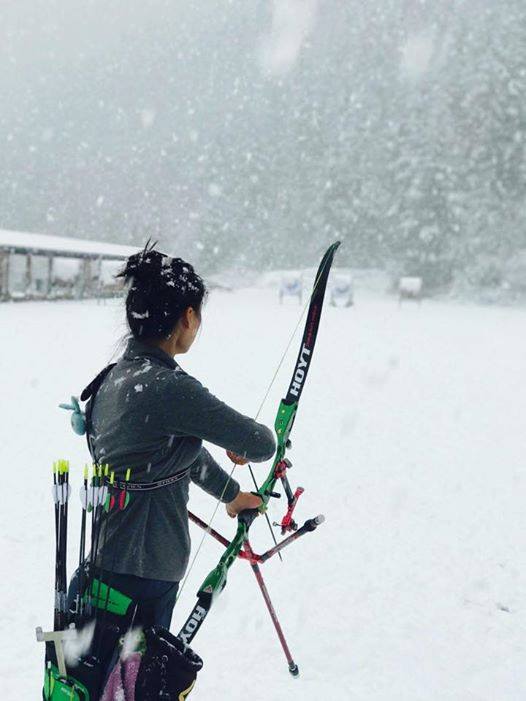
Pic: courtesy Bhutan Archery Federation
You will always find beauty in a wood through the seasons: fungi springing up after rain, mud frozen into patterns, spotting the first spring buds on the trees.
With some simple steps, you can make the most of the winter and enjoy your archery all year round.
To shoot NFAS or EFAA, you will need to be a member: to find details of membership requirements, clubs near you and shoot dates check: www.nfas.net, www.efaafieldarcher.com

